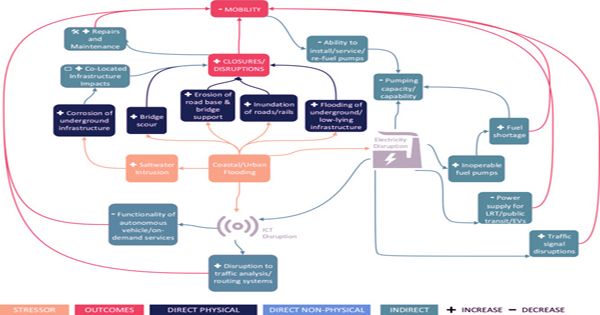Researchers at Penn State University have developed an innovative concept for piggy-backing on existing wires: intense weather monitoring. The team turned into their own campus as a testing ground during the April 15 thunderstorm.
Using Distributed Acoustic Sensing (DAS) array technology, they transmit a laser through a thin fiber of hair within 1 mile (3.3 feet) deep below the campus and measure a total of 2,000 sensors measuring every 2 meters (6.5 feet).

Underground fiber-optic cables hold potential for extreme weather monitoring
Take a moment to think about the surface ground under your feet. Think deeper and about the unseen world, the ground has a network of tree roots, but there are other types of networks: fiber-optic cables that connect us to each other via phone and internet services.
Tieyuan Zhu, an assistant professor of geophysics at Penn State, said, “If there’s a change in the external force at the top floor, even at the top of the walking steps, you’ll have very few changes that are going to stretch or shrink the fiber”. “The laser is very sensitive and can detect these small changes.”
These thunderstorms have been registered and recorded, “providing another way for tracking lightning and for public safety and emergency response, especially in urban areas," said David Stensrud, co-author of the study, published in the journal Geophysical Research. During storms like April, lightning strikes the ground from above and shovel pressure spreads like a wave in a pond. “Intense weather has strong interactions with land, but we don’t have the ability
to study the connection between the atmosphere and the hard earth,” added Zhu. “With this new technology, we can use fiber-optics networks to see clearly how lightning has flowed through campus.”Location data was verified with the National Data Lightning Identification Network (NLDN). The team identified 18 lightning-induced seismic events with peak frequencies ranging from 20 Hz to 130 Hz. At the time of the arrival of the lightning, scientists were able to estimate the rearward motion of the surface near the surface, the rear azimuth, and the path of the source moving from northwest to southeast.
The use of DAS, including fiber-optic cables, can lead to other natural hazards such as hurricanes, earthquakes and floods. Extreme weather events often transfer energy to the hard earth and create earthquake waves, which can cause damage to buildings and cause global economic damage, human damage and much more. Sensing technology is a relatively recent technology for monitoring acoustic strains over large distances through sites scattered throughout the fiber that serve as distributed interferometers.
“This study is an example of adopting an existing technology and using it to serve other purposes,” Stensrud said. “Multi-functional technology is most beneficial to society.” Earlier this year, a different team used Dior Fiber in Dark Fiber to record seven months of passive seismic data across 227 kilometers (117 miles) of a stretch of land in California – a term for unused fiber-optic cables.













